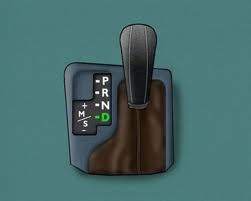Many parents and older supervising drivers will be familiar with the practice of shifting down gears when slowing down a manual transmission vehicle. Actually, for many of us, it was what was taught to us when learning to drive. The current ACT Learner Driver Standards which define the standards a learner driver must meet to obtain a drivers licence in the ACT require an entirely different approach to slowing the vehicle. Parents and Supervising drivers need to update their driving skills to ensure that the correct methods are taught and practiced with the learner driver.

The requirement for a learner driver to slow the vehicle by braking prior to chosing the appropriate gear for the conditions is taught as part of the Competency Based Training and Assessment (CBT&A) system of vehicle control which is considered a major component of good, safe defensive driving technicque. This method is used only for slowing and stopping the vehcile and not for descending steep hills. Its purpose is to ensure that the vehicle’s brake lights are activated immediately as a warning to following drivers and to reduce raod speed proopr to selecting a lower gear. This avoids the possibility of the drive wheels locking and also avoids the possibility of loss of vehicle control.
System of Vehicle Control
The ACT Learner Driver Standards require a driver to slow and stop a vehicle using a systematic procedure. This system of vehicle control requires the driver to use mirrors to check the proximity and intentions of following vehicles, indicate intent if a change of direction is required, brake in a constant smooth manner to ensure vehicle control is maintained and once the vehicle has slowed, select the appropriate gear to either negotiate the hazard or turn in the road.
The benefits of this technique are that:
• both hands remain on the steering wheel to maintain control of the vehicle,
• the driver’s posture can be braced using the left foot on the foot brace,
• the four wheels are under the influcen of braking force immediately, and
• the procedure can be applied in an emergency situation.
Steep Hills
All ACT learner drivers are required to demonstrate smooth and efficient gear changing procedures as part of competency 5. This standard applies as follows:
Manual transmission drivers:
A manual drivers licence learner must demonstrate their knowledge of appropriate gear selection for the road and traffic conditions, including their ability to ascend and decend hills using the correct gear slection.
Automatic transmission drivers:
An automatic drivers licence learner must demonstrate their use of the appropriate lower gears to slow the vehcile when descending a steep hill.
The systematic procedure is as follows:
Before descending a steep hill a driver should first brake to the speed required and then slect the appropriate gear that will assist with maintaining vehicle speed and control during descent. Gear selection is not intended to slow vehicle speed but can assist in maintaining a reduced speed and prevent vehicle acceleration.
Red Lights
The correct techique for approaching a red light under CBT&A is for a driver to slow down in whatever gear the vehicle is in, applying the brakes and then, when the lights change to green, sleect the appropraite gear for moving off.
What you can do
The National Driving Academy Accredited Driving Instructors will be instructing and assessment learner drivers in accordance to the ACT Learner Driver Standards. It is most beneficial if supervising drivers familiarise themselves with the requirements regarding the system of vehicle control so as to ensure that learner drivers are practising the skills and techniques as required by the standards.
We encourage all supervising drivers to speak to your child’s driving instructor to clarify the slowing and stopping procedure or any other aspects of the driving standards.